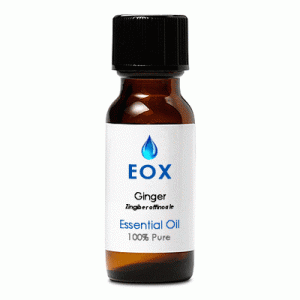|
Characteristics:
A pale yellow, amber or greenish liquid with a warm, slightly green, fresh, woody-spicy, sometimes
nutty, scent. It blends well with sandalwood, vetiver, patchouli, frankincense, rosewood, cedarwood,
coriander seed, rose, lime, neroli, orange and other citrus oils.
Principal Constituents: These are naturally occuring in the essential oil.
- gingerin
- gingenol
- gingerone
- zingiberene
- linalol
- camphene
- phellandrene
- citral
- cineol
- borneol
General Actions:   Open Symbols Key
Open Symbols Key
Analgesic, anti-oxidant, antispasmodic, antitussive, aperitif, aphrodisiac,
carminative, cephalic, diaphoretic, expectorant, febrifuge, laxative, rubefacient, stimulant, stomachic,
tonic.
Safety:

Non-toxic, non-irritant (except in high concentrations), slightly phototoxic; may cause sensitization
in some individuals in concentration.
Primary Therapy Agent:
Aches and pains, arthritis, poor circulation, low blood pressure, chill, cramp, gastric spasm.
Secondary Therapy Agent:
Rheumatism, sprains, strains, catarrh, coughs, sinusitis, sore throat, throat infections, colic,
indigestion, flatulence, loss of appetite, nausea, vomiting, colds/flu, fever, nervous exhaustion, fatigue.
Important Note: The information on Florapathics.com is
only provided for educational purposes, and further research should be done on each essential oil to be assured
of its proper usage for each individual. Aromatherapy is not meant to be a replacement for care under a qualified
health professional, but should be considered a complimentary modality.
|








